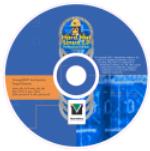Article: A developer’s review of MontaVista’s Hard Hat Linux SDK
Oct 10, 2001 — by Rick Lehrbaum — from the LinuxDevices Archive — 3 viewsForeword: This article is the second in LinuxDevices.com's new series of reviews, by software developer Jerry Epplin, of Embedded Linux toolkits. In order to gain insight into the use of each toolkit from the developer's perspective, Epplin builds Embedded Linux OS images for three different x86-based EBX form-factor single board computers using each toolkit. Each of the toolkits is then evaluated against a common set of criteria which include ease of use, overall toolkit architecture, methods of package management, diversity of platform support, and openness of the source code. In this installment, Epplin takes a close-up look at MontaVista Software's Hard Hat Linux 2.0 Professional Edition.

Following an introduction to the series, I reviewed Lineo's Embedix. In this article, I examine MontaVista's Hard Hat Linux 2.0 Professional Edition, a product with a quite different user view — one that experienced Linux users will be quite comfortable with, but others may find difficult to adjust to.
Unlike Embedix, which has a strong (and successful) emphasis on user friendliness, Hard Hat Linux can be expected to appeal to current Linux users requiring features specific to embedded systems. Its configuration and development model follows the GNU model closely. GCC, GDB, and DDD are used for program compilation and debugging. SysVinit is used for system initialization.
In general, the Hard Hat environment should seem familiar to current Linux users. But in its top-level layout, Hard Hat Linux more closely resembles the structure of traditional real-time operating systems (RTOSes) than that of Linux.
BSPs and LSPs
RTOS vendors generally deliver a core product which consists of the operating system and a set of development tools. In addition to this, a “board support package” (BSP) must be purchased, which provides drivers and configuration information for each supported single board computer (SBC) platform. Typically, the RTOS vendor will produce some BSPs for the most commonly used SBCs; vendors of less well-known SBCs are expected to produce and sell BSPs for their own boards. Developers of custom hardware can often start with the BSP that most closely resembles their design and customize it.
The RTOS model is somewhat different from that of Linux, in which customizing for your hardware consists of using a cross-compiler for your target architecture (if different from your host) and simply choosing your peripherals during kernel configuration. Naturally, the BSP model has great appeal to those using supported boards, since they need not worry about minutiae like serial or Ethernet chips and which drivers best apply to them.
Hard Hat provides BSPs (which they call LSPs, for “Linux Support Packages”) for a number of SBCs, as well as for a few other platforms such as the Compaq iPAQ and the Rebel.com Netwinder. Architectures supported include x86, MIPS, PowerPC, StrongARM, XScale, and SuperH.
As described in the introduction to this series, my review of each embedded Linux distribution includes configuring and testing the system on EBX form-factor x86 SBCs from Adastra, Ampro, and WinSystems. Of these, Hard Hat only provides an LSP for the Ampro Little Board/P5x. Consequently, this review will provide a good test both of how well MontaVista supports well-known boards via LSPs, and of how easy it is to customize Hard Hat for boards not officially supported.
Story navigation . . .
- Part 1: First impressions
- Part 2: Getting started
- Part 3: Cross-development
- Part 4: GUI-based Target Configuration Tool
- Part 5: Other observations
- Part 6: Overall assessment
This article was originally published on LinuxDevices.com and has been donated to the open source community by QuinStreet Inc. Please visit LinuxToday.com for up-to-date news and articles about Linux and open source.